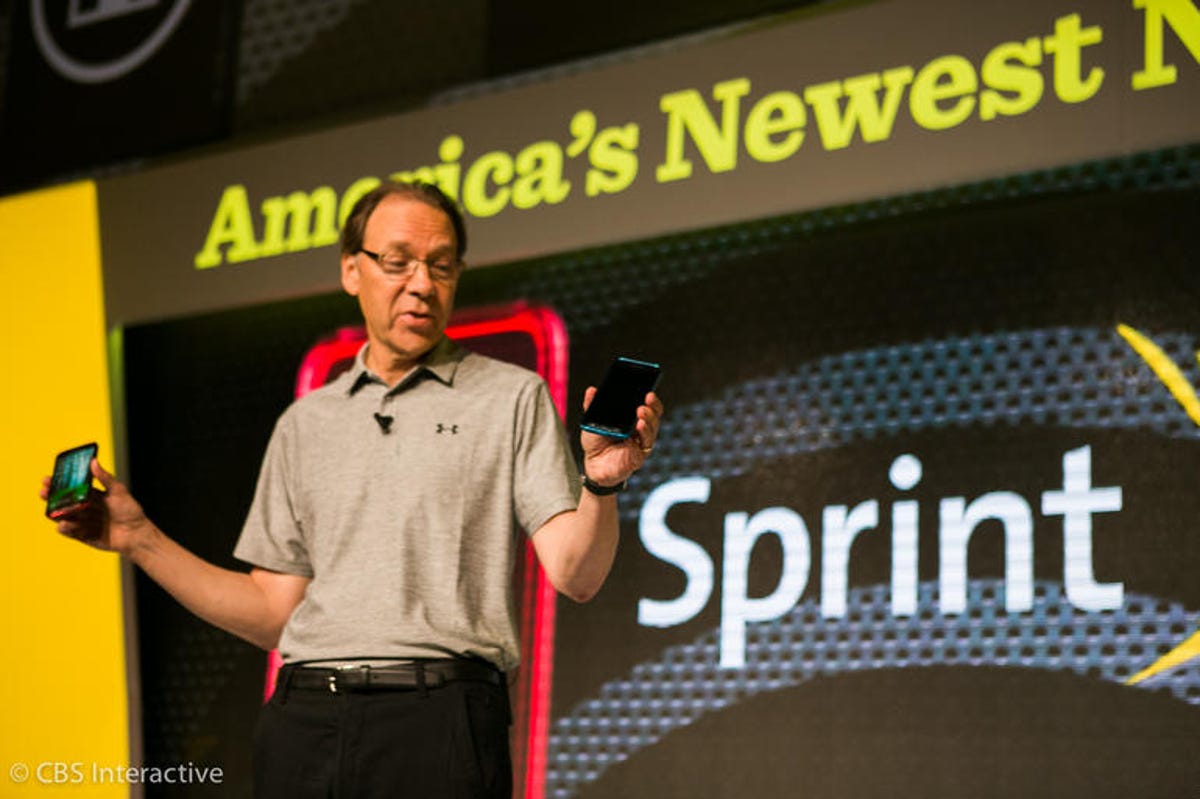
Marguerite Reardon/CNET
Sprint returned to a profit in the fiscal first quarter, a rare bit of positive news amid its tough turnaround.
The nation’s third-largest wireless carrier by subscriber base continued to lose customers in its core Sprint and prepaid arms, posting a net loss of 220,000 subscribers for the period, which ended June 30. Its results were propped up by a gain in wholesale and affiliate customers.
The Overland Park, Kan., company posted a fiscal first-quarter profit of $23 million, or 1 cent a share, on revenue of $8.79 billion. A year ago, before Sprint merged with Clearwire and was acquired by Japanese carrier SoftBank, it posted a loss of $1.6 billion, or 53 cents a share, on revenue of $8.9 billion.
Related stories
- Sprint partners with Spotify for music streaming
- Sprint offers 30-day money-back guarantee to prove its network is fixed
- Framily’s a hit? Sprint CEO calls it fastest growing plan ever
- Sprint gets active with Galaxy S5 Sport
The results exceeded Wall Street’s average forecast of a loss of 1 cent a share and revenue of $8.78 billion.
Sprint’s continued struggles with customer growth underscore the increasingly tough environment in the wireless business. Larger rivals AT&T and Verizon Wireless both rebounded in customer growth this period, and T-Mobile is expected to post another impressive quarter when it reports its quarterly results tomorrow.
Still, investors were pleased with Sprint’s progress. Shares rose more than 3 percent to $8.25 in pre-market trading.
CEO Dan Hesse, speaking on a conference call with analysts, acknowledged the need to change for a plan “refresh,” and confirmed the company was testing out new options. The company currently leans heavily on its “Framily” friends and family program as its main offering, but has been hammered by simpler, discounted no-contract offerings by the likes of AT&T and T-Mobile.
“(Framily) was competitive at that time,” Hesse said. “It’s been less competitive.”
CNET News previously reported on some of the new options being considered.
For those who are on unlimited plans, Hesse said he would be “very surprised” if the new plans didn’t include an option for unlimited data, as it has been a marquee offering at Sprint.
Unlimited or not, Sprint has been hampered by the slow rollout of its 4G LTE network, which has been complicated by the need to also upgrade its 3G network. The carrier’s network continues to lag behind those of its rivals in coverage and speed. Hesse touted new technology that would further enhance the speeds of its network, but they would come for another year.
That doesn’t mean Sprint hasn’t been active. In April, Sprint held a splashy New York event to launch the HTC One M8 Harman Kardon edition, as well as its partnership with Spotify. It held another event in June to introduce its 30-day money-back guarantee, nationwide high-definition voice service, and the exclusive Galaxy S5 Sport. It has yet another event in New York slated for August.
The events, however, haven’t translated into customer growth, a key metric of health for the carriers. Sprint in particular has consistently suffered over the last few quarters. Sprint again blamed the elevated customer turnover rate on the ongoing network overhaul.
Digging deeper into the numbers, and things look worse. All of its growth came from the tablet side, which generates less revenue than smartphones, while Sprint lost 646,000 phone customers and 70,000 other devices.
Still, the results were an improvement over a year ago, when the company lost more than 2 million customers as a result of the shutdown of its Nextel network. It has taken the spectrum from that unit to add capacity to its core service, part of the “Spark” enhanced LTE that utilizes three different bands of spectrum.
Sprint saw its customer defection rate on the retail postpaid side improve to 2.09 percent, down from 2.63 percent a year ago. The retail prepaid rate, which is generally higher because customers don’t have contracts and are free to leave, fell to 4.5 percent from 5.51 percent a year ago.
The company hopes growth will stabilize and customers will give it a second look once it completes its network infrastructure improvements. The company recently hit its mid-year target for 4G LTE coverage, which covers 254 million people in 488 cities. There are, however, only 27 markets able to get its faster Sprint Spark service.
Updated at 6:35 a.m. PT: To include executive quotes and additional background.



